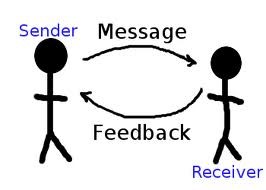“The Art of Effective Communication,” observing a piece of communication in three different modalities. We are constantly sending messages, to include the ones we to intend to send, the ones we actually send, the message as the receiver interprets it; the response of the receiver based on what he or she heard; and our reaction to the exchange of words, meaning and interpretation” (Franck & McCastskill, n.d., p. 1). After observing three communication examples, my reaction and interpretations of the messages are as followed:
The email was clear and relayed Jane’s message precisely. Jane needed Mark’s data to complete her report by a certain deadline. Her email began with a clear purpose that stated the situation (Dr. Stolovitch (Laureate Education, Inc., n.d.). Jane showed concern and understanding when she addressed Marks busy work schedule. The email created more cognitive load, because it was hard to read and time-consuming. I did not make any connection to the writer and felt like this could have one of many request Mark receives on a daily basis. The lack of voice and tone made it difficult to form an emotional connection or concern for what the words were saying.
VoiceMail
The voicemail improved my comprehension of the message compared to the email version. The message included a formal tone which created a sense of urgency to Jane’s request. (Laureate Education, Inc., n.d.). I focused more on how Jane felt about not having the data she needed to complete her work. Jane seemed frustrated and wanted Mark to understand the importance of her receiving his data to complete her report, while trying to show her appreciation for the work he is doing. The voicemail lacks nonverbal cues, so I tended focus on every word being said and the tone of the voice that is being used.
Face to face
In this situation Jane’s face-to-face conversation with Mark was more informal and laid back. There was no sense of urgency to her request. Her poise gave the impression that her and Mark were friends and that the deadline was not as urgent as in the other scenarios.
I believe the tone and the approach influenced my interpretation of each modality. I believe face-to-face communication could eliminate misinterpretation, because it allows the receiver to ask questions to clarify misunderstanding immediately. However, the face-to-face scenario portrayed is not ideal in a professional environment. Stolovitch states that written communication should include five things (Laureate Education, Inc., n.d.). 1. Begin with a clear purpose, 2. State the situation, 3. Include possible solutions, 4. Specify the form that the response is required to take, 5. Keep the tone of all communications business friendly and respectful, and the email accomplished that. “Effective communicators encode their messages with their intended audience in mind as well as the communication channel” (Skillsyouneed, 2014). “This involves an appropriate use of language, conveying the information simply and clearly, anticipating and eliminating likely causes of confusion and misunderstanding, and knowing the receivers’ experience in decoding other similar communications. Successful encoding of messages is a vital skill in effective communication” (Skillsyouneed, 2014).
References:
ranck & McCastskill, (n.d.). Effective communication. Retrieved from http://www.umext.maine.edu/onlinepubs/pdfpubs/6103.pdf
Laureate Education, Inc. (Producer). (n.d.). Communicating with Stakeholders. [Video webcast]. Retrieved from: https://class.waldenu.edu/webapps/portal/frameset.jsp?tab_tab_group_id=_2_1&url=%2Fwebapps%2Fblackboard%2Fexecute%2Flauncher%3Ftype%3DCo
What is Communication (2014). Retrieved from SkillsYourNeed (blog post) http://www.skillsyouneed.com/general/what-is-communication.html


HI Lana,
I agree that you couldn’t really make a connection in the email because of the lack of voice and tone. The email conveyed the message that she needed the information asap, but to me didn’t convey an urgent tone. Maybe Jane should have included in the subject line “URGENT DEADLINE” or “RESPONSE NEEDED” or “ACTION REQUIRED”. There is a way to convey the tone through words. When I was in undergrad, I used to often type emails USING ALL CAPS until my professor told me that was like yelling at someone. I am not saying Jane should yell at Mark, but she could have made certain words in her email bold face or underline to convey its tone.
When it comes to the face-to-face, I think the person displayed a sense of concern with her face expression. In a business setting, I wouldn’t expect to run to Mark shouting, and jumping around to display a sense of urgency. But your face expression, tone of voice, and body language can go a long way.
But either way, I think we need to communicate with people the way we may think they will interpret it. From the project manager standpoint, this mean we have to get to know the people on our project team to better understand how they communicate.
Hi, Lana,
You mentioned that the e-mail created a greater cognitive load because it was hard to read and time consuming. I agree with this analysis. One thing that may have made it better would have been if the writer had separated it into more than one paragraph. This might have made it a bit easier to read.
I definitely felt the same way you did about the lack of urgency in the face-to-face conversation. It really made me pay more attention to what types of body language I may have when conversing with people.
– Michele